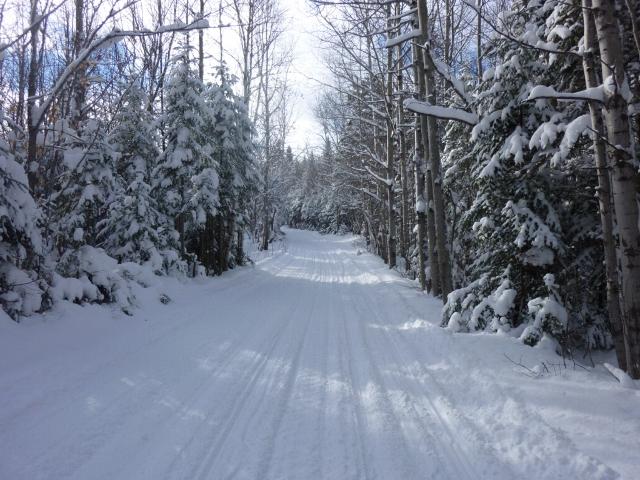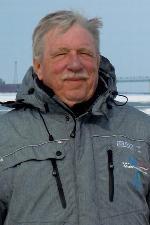We are surrounded by pleasant and unpleasant sounds. A sound becomes unwanted when it is unbearable to the one who hears it due to its intensity, to the time of day or to the fact that this sound keeps the person from hearing other more pertinent sounds, wanted or more pleasant, such as a conversation or music.
The road traffic or snowmobile noise first comes from the exhaust noise, then from the tires or track rolling. The number of vehicles passing through, the traffic speed, the number of stops and starts, the route getting ascending, the terrain configuration on the sideways, play an important role on the sound environment. A vehicle forcing due to topography or after a stop produces more noise. A flat land, without any tree or shrub as shield, will transmit the sounds more easily than a road or trail running alongside a bank bottom.
Sound environment is measured in decibels. It represents the sound pressure on the human ear. As noise varies continuously in time and space, we need to measure it with a sonometer to evaluate and analyze the dynamics. For example, is a maximum or medium sound level present only during a few seconds or even more present according to the moment of the day ? What is the measurable difference between speeding at 70 km and 30 km, or yet, the difference between 10 m and 30 m away?

It has been proved too that excessive noise has some effect on physiological and psychological health and on the behavioral habits.
It is also interesting to know that the lower the ambient noise is, the more disturbing will be a sudden sound. As said by the residents living along highways or industrial zones, we get used to some level of continuous ambient noise.

Another myth is to want absolutely to set the route far away from the houses. It is important to understand that when distance is doubled, the sound level diminishes only by 3 to 4,5 decibels according to the type of soil. The buffer zones between traffic zones and houses are no miracle solutions.
It is the same conclusion for the vegetable shield. To plant trees, mostly 30 m high (100 feet) conifers on both sides of a road or a trail, reduces the sound level only by 3 to 5 decibels. A hardwood screen, in winter, will not provide the expected benefits and to set the snowmobile trail 90 m (300 feet) away is not either a miracle solution.
So, we must try to work with other elements. The use of topography to plan the snowmobile trails is a very significant measure. To do so, the adequate right of way must be negotiated with the land owners if we want to avoid a relocation that would be more destructive or stressful in terms of sound transmission. For that purpose, those who are concerned must remember that slopes absorb sounds enough to reduce them by 6 to 15 decibels. When the use of a natural bank as a shield is possible, the route could follow it and the neighborhood would benefit from it. If this bank is made of softwood (fir tree, spruce), we improve the efficiency of the shield. The problem is that to optimize the routes in regards of noise reducing, we must first be able to discuss it with the land owners and show some open-mindedness to find more convivial solutions.

Furthermore, every new home owner or the owner who renovates his house or cabin close to a road or a all-terrain vehicle trail or a snowmobile trail should give a special attention to the insulation of the walls and windows, to the weatherstripping and the wind tightness of the various outer covering components. This is intended not only for energy-saving but also for soundproofing. Just a small split on a door not adequately weatherstripped can almost eliminate the insulation value of an entire wall. The more a window closes tight and the larger is the space between glasses, the more the window will be efficient. The more a wall is massive, the more it is soundproof. The inner insulation of a house by use of carpets, draperies and other elements also influence the soundproof level. The building must not become a sound box and we must think about this before any construction or renovation.
On some leasure lakes, war runs between sailboats who call themselves more environmentalist, and speedboats. The conflict goes on and still they do not bring any solution to blue-green bacteria or other problems of the highest importance though. As the saying goes, while chefs are fighting, the roast burns. On the snowmobile trails, at some places, there is also a fight to eliminate snowmobiling. These unproductive battles never lead anywhere and there are many solutions, but we have still got to work together and be part of the solution if we want to settle them.
Sound level has been reduced a lot by snowmobile manufacturers. Now, the engines must meet new north-american standards and the results are tangible. From 102 decibels, equivalent to an air hammer, they are reduced to 73 decibels, the noise of a vacuum cleaner 10 feet away, or a train 100 feet away. A normal conversation indoor produces 50 decibels while whispering produces 30 decibels. Technologies will keep on improving during the next years. Customers ask for it and the economy market will take care of it.
Besides, the reduced speed in residential zone in effect since 2005 requires a more convivial behaviour from the snowmobilers who speed up after stopping or requires a quieter circulation during evenings and nights. These are measures that can be respected by everybody riding as discreetly as possible. Regarding the clubs, some measures will help reducing the noise and will allow the side residents to co-exist harmoniously with snowmobiling. We are talking here about the relocation of trails by using the topography and trees more adequately, by choosing routes in collaboration with the home owners rather than confronting them. Taking time to negotiate the most appropriate route to assure the highest discretion will solve many problems.
The snowmobile industry brings wealth and with the right integretation into the environment, it will keep on making white gold out of our winters for the tourist industry rather than battle fields where nobody wins. We should contribute first by avoiding extremes and by considering constructive solutions. The extreme riders are as unpleasant as the selfish persons disguised in extreme environmentalists. Don’t you think so ?


